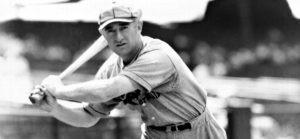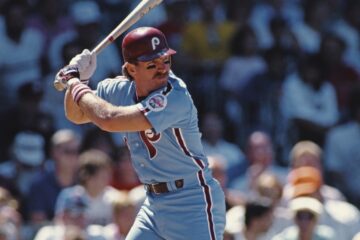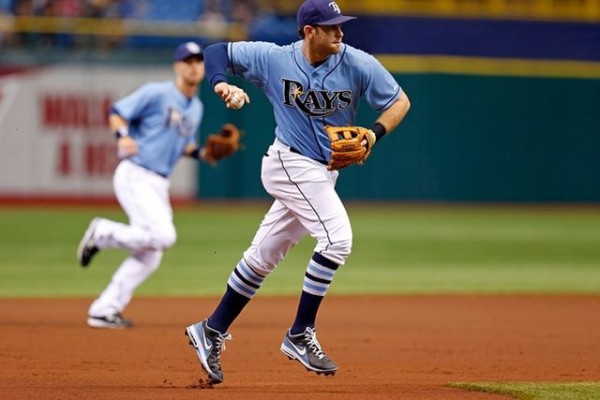Hall of Fame Index: Who is the least qualified third baseman in the Hall of Fame?

We have gone through three positions already which brings us to the halfway point in terms of position players. We didn’t focus on Veterans Committee selections in the book because we were focused more on players out of the Hall of Fame than those in the Hall of Fame. The problem is that the Veterans Committee selections often create something of an “if…then” fallacy. If Player A is a Hall of Famer than Player B must be as well. Our governing question is whether any particular player is the most fit and not whether they are Hall of Famers or not.
That might seem like a distinction without a difference, but it is very different when it is put into practice. A 300 index score might seem to qualify someone, but it is more about whether there is anyone more fit than that. If you read the book you will notice that a number of third basemen are on the outside looking in despite having some very strong index scores. This is where the Veterans Committee list comes in. It is shorter than other positions, but there are some names here that make you scratch your head.
The committee invested time in these players. That is time that could have been invested in others that are more fit. We will include offensive numbers, fielding numbers, and their BWAR MVP points because those can help explain why the committee chose to focus on them. More often than not, there are idiosyncratic reasons that help explain it.
Career Value
| BWAR | FWAR | WS/5 | Total | |
| Ron Santo | 70.5 | 70.9 | 64.8 | 206.2 |
| Home Run Baker | 62.7 | 60.1 | 60.2 | 183.0 |
| Jimmy Collins | 53.4 | 52.5 | 54.8 | 160.7 |
| Deacon White | 45.5 | 41.1 | 38.0 | 124.6 |
| George Kell | 37.6 | 38.2 | 45.8 | 121.6 |
| Freddy Lindstrom | 27.5 | 30.6 | 38.6 | 96.7 |
In economics there is a notion called “opportunity cost.” Essentially, it means once you make a decision to do one thing then you can’t do that other thing simultaneously. So, if the family goes to the zoo then it also cannot go to the museum during that time. What does this have to do with baseball? Well, when I champion one player then I cannot equally champion another. This is particularly true for 19th century players like Deacon White.
We ultimately have to decide if that is the hill we want to die on. Why White? What makes him special. While third basemen and shortstops are not the same thing, we can ask why White and not Bill Dahlen or Jack Glasscock? Is there another third baseman more deserving of our attention? In a similar way, guys like Kell and Lindstrom are very underwhelming when compared to players from their era. Why not Stan Hack or Bob Elliott? Is there something about their records we aren’t seeing? Well, let’s find out, but before we do we should clean up the index on aisle six.
Peak Value
| BWAR | FWAR | WS/5 | Total | Index | |
| Santo | 66.0 | 65.7 | 55.0 | 186.7 | 392.9 |
| Baker | 58.9 | 56.6 | 56.0 | 171.5 | 354.5 |
| Collins | 47.7 | 47.7 | 49.4 | 144.8 | 305.5 |
| Kell | 31.5 | 32.8 | 37.0 | 101.3 | 222.9 |
| White | 26.7 | 24.0 | 27.6 | 78.3 | 202.9 |
| Lindstrom | 27.7 | 30.4 | 36.4 | 94.5 | 191.2 |
We see a dichotomy between the top three and bottom three. Santo did not get to enjoy his enshrinement because he died prematurely due to the effects of Diabetes. If the Veterans Committee hadn’t wasted so much time on candidates that were not fits he may have enjoyed his day in the sun after all. This is where these academic discussions collide with reality. Whether a Bill Dahlen ever has his name called is less important in human terms than someone like Graig Nettles, Buddy Bell, or even a Scott Rolen.
Of course, I cover those players in more detail in my book. Here we need to look at why those bottom three got in. What was the nature of their numbers that made committee members stand up in cheer? In some cases there are some legitimate considerations. In other cases, they had buddies on the committee that felt their time was due.
Offensive Numbers
| OPS+ | Rbaser | OW% | wOBA | |
| Baker | 135 | -5 | .697 | .384 |
| White | 127 | -7 | .634 | .343 |
| Santo | 125 | -6 | .652 | .367 |
| Collins | 113 | -11 | .609 | .358 |
| Kell | 112 | 7 | .594 | .362 |
| Lindstrom | 110 | -12 | .586 | .364 |
Evaluating 19th century guys is hard. The notion of what a full season looks like is far different. In a 100 game season, getting three wins or 15 win shares (divided by five to get three wins) doesn’t seem so bad. We can still compare Collins and White. Collins averaged nearly five wins a season during his prime while White averaged nearly three. That’s a significant difference. So, White appears to be better than the raw numbers indicate, but we still have to ask why there was such an effort to get him in.
The problem with Kell and Lindstrom is different. The era they played in was known for good offense. Couple that with an overreliance on batting average and you can see why they were overrated. Stealing first base is far more important than anything else you can do offensively. Neither player was as good as the basic numbers would have you believe. The OPS+ and wOBA numbers bear that out.
Fielding Numbers
| Rfield | DWAR | TZ3B | DWS/5 | |
| Collins | 121 | 16.8 | 122 | 17.9 |
| Baker | 35 | 9.6 | 35 | 13.1 |
| Santo | 20 | 8.7 | 27 | 13.8 |
| Lindstrom | 21 | 2.6 | 16 | 9.7 |
| Kell | 15 | 1.6 | 21 | 11.0 |
| White | -19 | 1.7 | -14 | 8.0 |
The problem with evaluating fielding is that we have to think long and hard about our frame of reference. Are we comparing fielders to the average fielder at their position? Are we comparing them to an overall replacement level player? Are we comparing them to a replacement level third baseman? We do all three above and that can create different looking results. Lindstrom had a relatively short career, so even though he was above average he didn’t have the longevity stats to match.
Collins could be a contender for the top five all-time in defensive value. He won’t compare to Brooks Robinson or Mike Schmidt, but he was the standard for the first half of the game’s history. There were no butchers in this group and that includes White. He played for nearly 20 seasons, so being -14 at third base alone over that time means he was -1 or -2 a season while playing third. That’s basically average.
BWAR MVP Points
| Top 10 | Top 5 | MVP | Points | |
| White | 3 | 3 | 1 | 34 |
| Santo | 1 | 4 | 1 | 33 |
| Baker | 4 | 4 | 0 | 32 |
| Collins | 3 | 3 | 0 | 24 |
| Lindstrom | 1 | 2 | 0 | 13 |
| Kell | 2 | 0 | 0 | 6 |
What does this all mean? Is White considerably better than Santo or Baker? Of course not. That notion would be ridiculous. We are always looking for gaps in data. In this case there is a sizeable gap between the top four guys and the bottom two. Lindstrom had two seasons looked like the stuff of legend. When you compare those numbers to other players in the same league then you come away a little less impressed.
Lindstrom certainly has the lower index score, but you can see where those two seasons (1928 and 1930) captured some imaginations. Kell won a batting title in 1949, but he never captured anyone’s imagination in the MVP voting. He had two top five finishes, but those seasons were not top five seasons according to BWAR. A sober reading of the numbers should have revealed him lacking.
Lindstrom though has to win the award for today. When you have a very short career you have to have a compelling reason to vote for someone. If Mike Trout quit playing tomorrow he would have amassed some compelling numbers to the short time he has been up. Lindstrom did not. When put into their proper context his numbers were good, but good doesn’t get you in unless you do it for twice as long as he did.



